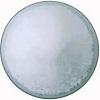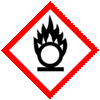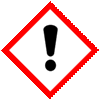Zinc Nitrate Hexahydrate Anhydrous Manufacturers, with SDS GHS MSDS Sheet |
Supplier, Manufacturer, Exporter of Zinc Nitrate Hexahydrate Anhydrous, Muby Chemicals of Mubychem Group, established in 1976, is the original manufacturers of Specialty Chemicals, Pharmaceutical Excipient, Fragrance Food & Flavor chemicals, Reagent Grade Chemicals, Shale Gas Fracturing Chemicals in India. Mubychem Group has several manufacturing facilities spread across Western India and world wide contacts and toll manufacturers. We are exporting globally to countries like USA, Canada, Europe, UAE, South Africa, Tanzania, Kenya, Egypt, Nigeria, Cameroon, Uganda, Turkey, Mexico, Brazil, Chile, Argentina, Dubai, Korea, Vietnam, Thailand, Malaysia, Indonesia, Australia, China, Germany, France, Italy Portugal, Bangladesh, etc. The products are offered as per required specifications and in correct shape and size in mm or meshs or microns as specified by the buyer. The participating units have one or more accreditations like FDA - cGMP and GLP approval, ISO-9001 Certified, "REACH" Registered, ISO-14001, ISO/IEC 17025, ISO-22000, FSSC 22000, ISO 45001, Kosher Certified, Halal Certified, HACCP, FSSAI. We offer Commercial Pure & IP BP EP Ph Eur USP NF JP FCC Food Grade Analytical Reagent Grades of Chemicals |
| Bookmark this Web Site -- or -- Email This Page Info to a Colleague or Yourself |
Search our website here:







Zinc Nitrate Hexahydrate Anhydrous CAS Number 10196-18-6 for hexahydrate, 19154-63-3 for tetrahydrate and 7779-88-6 for anhydrous, EINECS EC Number: 231-943-8, Molecular Formula: Zn(NO3)2 for anhydrous Zn(NO3)2-6H2O for hexahydrate, Molecular Weight: 189.36 for anhydrous and 297.49 for hexahydrate, HS Code 28342990 or 28342980
How big is your requirement or how small
We serve it all.
Specifications, Safety Data Sheet, Manufacturing process details, Wholesale retail buy sell prices, Uses etc available on line in these pages for Zinc Nitrate Hexahydrate Anhydrous.
For SDS MSDS Sheet Click
SDS MSDS Sheet of Zinc Nitrate Manufacturers
Zinc Nitrate Hexahydrate
Pure Suppliers

Zinc nitrate is an inorganic chemical compound, highly deliquescent, generally available as a hexahydrate Zn(NO3)2-6H2O. Zinc nitrate has no large-scale application but is used on a laboratory scale for the synthesis of coordination polymers and in cosmetic industry.
General Properties and Specifications of Zinc Nitrate:
Appearance: White Crystals.
Assay as Zn: Not less than 21.7%
Assay on Anhydrous Basis: Not less than 99%
Iron (Fe): Not more than 50 ppm.
Chlorides: Not more than 0.005%
Sulphates: Not more than 0.005%
pH (1% solution): About 5
Relative density: about 2.07 for hexahydrate.
Melting Point: 36.4C for hexahydrate.
Solubility: Soluble in water and in alcohol.
Storage: Room temperature. Preferably refrigerate.
We also manufacture and supply as under:
Bismuth NitrateZinc Nitrate Hexahydrate Anhydrous.
Manufacturers:
MUBY CHEMICALS
Ambernath Mumbai, Ankleshwar Gujarat, India
TEL: (OFFICE) +912223770100, +912223726950
Current Date Time in India GMT+5:30
e-mail: info@mubychem.com
USA, Canada, Mexico and other American neighbouring buyers may
e-mail: us@mubychem.com
Call toll-free 1-877-682-9243 (1-877-MUBYCHEM)

Copyright and Usual Disclaimer is Applicable.
Last 10 November, 2025




Exporters to USA Canada UAE Europe South Africa Tanzania Kenya Uganda Egypt Nigeria Turkey Mexico Brazil Argentina Chile Dubai etc.
Global or International Suppliers, Exporters, Importers, Manufacturers
I shall pass through this world, but once. If therefore, there is any good that I can do, or if there is any favor that I can show to a fellow human being, let me do it now. Let me not defer or neglect it. For I shall not tread this way again
Zinc Nitrate Hexahydrate SDS, Safety Data Sheet
MSDS Sheet, Material Safety Data Sheet 07-Aug-24
1. Product Identification
Synonyms: Nitric acid Zinc salt.
CAS No.: 19154-63-3
EINECS: EC Number: 231-943-8
Molecular Weight: 297.49
Chemical Formula: Zn(NO3)2-6H2O
Recommended usage: Industrial Manufacturing.
Suppliers: As per letterhead above.
2. Hazards Identification
GHS, Globally Harmonized System Classification in accordance with 29 CFR 1910
Classification according to Regulation (EC) No 1272/2008:
Oxidizing solids Category 3 H272
Acute Toxicity Oral Category 4 H302
Skin irritation Category 2 H315
Eye irritation Category 2A H319
Specific target organ toxicity - single exposure Category 3, Respiratory system H335
Labeling according to GHS & Regulation (EC) No 1272/2008
GHS Label Elements  Oxidizing Solid | GHS Label Elements  Irritant |
Signal Word: Warning
Hazard Statements:
H272: May intensify fire; oxidizer.
H302: Harmful if swallowed.
H315: Causes skin irritation.
H319: Causes serious eye irritation.
H335: May cause respiratory irritation.
Precautionary Statements
P210: Keep away from heat/sparks/open flames/hot surfaces – No smoking.
P220: Keep/Store away from clothing/…/combustible materials.
P221: Take any precaution to avoid mixing with combustibles.
P260: Do not breathe dust/fume/gas/mist/vapors/spray.
P264 Wash thoroughly after handling.
P270 Do not eat, drink or smoke when using this product.
P273: Avoid release to the environment.
P280 Wear protective gloves/protective clothing/eye protection/face protection.
P330: Rinse mouth.
P301+P312: IF SWALLOWED: Call a POISON CENTER or doctor/physician if you feel unwell.
P301+P330+P331 IF SWALLOWED: rinse mouth. Do NOT induce vomiting.
P302+P352: IF ON SKIN: Wash with soap and water.
P303+P361+P353 IF ON SKIN (or hair): Remove/Take off immediately all contaminated clothing. Rinse skin with water/shower.
P304+P340 IF INHALED: Remove victim to fresh air and keep at rest in a position comfortable for breathing.
P305+P351+P338: IF IN EYES: Rinse cautiously with water for several minutes. Remove contact lenses, if present and easy to do. Continue rinsing.
P310 Immediately call a POISON CENTER or doctor/physician.
P332+P313: If skin irritation occurs: Get medical advice/attention.
P337+P313 If eye irritation persists: Get medical advice/ attention.
P342+P311 If experiencing respiratory symptoms: Call a POISON CENTER or doctor/physician.
P370+P378: In case of fire: Use … for extinction.
P362: Take off contaminated clothing and wash before reuse.
P501 Dispose of contents/container in accordance with local/regional/national/international regulations.
Classification according to EU Directives 67/548/EEC or 1999/45/EC:
O Oxidizing; Xn Harmful; R 8, R22, R36/37/38.
For the full text of the S-statement & R-phrases mentioned in this Section, see Section 16.
3. Composition/Information on Ingredients
Ingredient: Zinc Nitrate
CAS No.: 10196-18-6
EINECS: EC Number: 231-943-8
4. First Aid Measures
Always seek medical attention after first aid measures are provided.
Inhalation: Remove to fresh air. If not breathing, give artificial respiration. If breathing is difficult, give oxygen. Get medical attention.
Ingestion: Never give anything by mouth to an unconscious person. Get medical attention.
Skin Contact: Wipe off excess material from skin then immediately flush skin with plenty of water for at least 15 minutes. Remove contaminated clothing and shoes. Get medical attention. Wash clothing before reuse. Thoroughly clean shoes before reuse.
Eye Contact: Immediately flush eyes with plenty of water for at least 15 minutes, lifting lower and upper eyelids occasionally. Get medical attention immediately.
Note to Physician: -.
5. Fire Fighting Measures
Flammability of the Product: The product is not flammable, but it is an oxidizer.
Flash Points: NA.
Products of Combustion: It emits toxic oxides of carbon and oxides of nitrogen when heated to decomposition. Zinc oxide will be formed.
Fire: Zinc nitrate is an oxidizer.
Fire Extinguishing Media: Use water spray, alcohol-resistant foam, dry chemical, or carbon dioxide. Use means suitable for extinguishing surrounding fire.
Special Information In the event of a fire, wear full protective clothing and NIOSH-approved self-contained breathing apparatus with full face piece operated in the pressure demand or other positive pressure mode. At high temperatures or when moistened under fire conditions, it may produce toxic or irritating fumes.
It may accelerate burning when involved in a fire. Increases the flammability of any combustible material. May ignite Combustibles (wood, paper, clothing, etc.). Flames up when heated to 540 deg. C. Mixture with charcoal ignites on heating. Contact with combustible or organic materials may cause fire.
6. Accidental Release Measures
Small Spill: Avoid dust formation. Avoid breathing dust. Ensure adequate ventilation. Use appropriate tools to put the spilled solid in a convenient waste disposal container. Finish cleaning by spreading water on the contaminated surface and dispose of according to local and regional authority requirements.
Large Spill: Do not let the product enter drains. Use a shovel to put the material into a convenient waste disposal container.
7. Handling and Storage
Do not breathe dust. Wear suitable protective clothing. In case of insufficient ventilation, wear suitable respiratory equipment.
Avoid contact with skin and eyes. Avoid formation of dust and aerosols. Wash hands thoroughly after handling. Provide appropriate exhaust ventilation at places where dust is formed. If you feel unwell, seek medical attention.
Hygroscopic. Keep Zinc nitrate in a tightly closed container, stored in a cool, dry, ventilated area. Protect against physical damage or contact with oxidizing material and combustible substances.
8. Exposure Controls/Personal Protection
Airborne Exposure Limits: None established.
Ventilation System: A system of local and/or general exhaust is recommended to keep employee exposures as low as possible. Local exhaust ventilation is generally preferred because it can control the emissions of the contaminant at its source, preventing dispersion of it into the general work area.
Personal Respirators (NIOSH Approved): For conditions of use where exposure to dust or mist is apparent and engineering controls are not feasible, a particulate respirator may be worn. For emergencies or instances where the exposure levels are not known, use a full-face positive-pressure, air-supplied respirator.
Skin Protection: Wear protective gloves and clean body-covering clothing.
Eye Protection: Use chemical safety goggles and/or full-face shield where dusting or splashing of solutions is possible. Maintain eye wash fountain and quick-drench facilities in work area.
Other Control Measures: Maintain good housekeeping in work area. Dust deposits on floors and other surfaces may pick up moisture and cause the surfaces to become slippery and present safety hazards. Handle in accordance with good industrial hygiene and safety practice. Wash hands after handling.
9. Physical and Chemical Properties
Appearance: It is colorless or white crystals or powder or granules.
Odor: None to slight.
Solubility: Readily soluble in water
pH: 6-9 at 1% solution at 25 C (77F)
Density: 2.06 gm/cc
Molecular Weight: 297.49
Chemical Formula: Zn(NO3)2 . 6H2O
% Volatiles by volume @ 21C (70F): 0
Boiling Point: Decomposes.
Melting Point: 36C.
10. Stability and Reactivity
Stability: It is stable under ordinary conditions of use and storage.
Hazardous Decomposition Products: It emits toxic oxides of nitrogen along with Zinc oxide when heated to decomposition.
Hazardous Polymerization: Will not occur.
Incompatibilities: Powdered metals, Cyanides, Sodium hypophosphite, Stannous chloride, Thiocyanates, Strong reducing agents.
Conditions to Avoid: Moisture, Heat, Incompatibles.
11. Toxicological Information
Routes of Entry: Inhalation, Ingestion, Contact.
Toxicity to Animals:
LD50 Oral - Rat - 1190 mg/kg
LD50 Oral - Mouse - 241.3 mg/kg
Carcinogenicity: This product present at levels greater than or equal to 0.1% is identified as probable, possible or confirmed human carcinogen by IARC, NTP, ACGIH & OSHA.
Reproductive toxicity: No data available
Specific target organ toxicity - single exposure: Inhalation - May cause respiratory irritation. Teratogenic Effects: Not available.
Developmental Toxicity: Not available.
12. Ecological Information
Environmental Toxicity:
Fish LC50 Minnow (Phoxinus phoxinus) 2.7 - 3.7 mg/l, 96 hours
Biodegradability: -
BOD5 and COD: Not available.
Results of PBT and vPvB assessment: This substance/mixture contains no components considered to be either persistent, bioaccumulative and toxic (PBT), or very persistent and very bioaccumulative (vPvB) at levels of 0.1% or higher.
Toxic to aquatic organisms May cause long-term adverse effects in the aquatic environment. Do not empty into drains. Do not flush into surface water or sanitary sewer system. Do not allow material to contaminate the ground water system.
13. Disposal Considerations
Whatever cannot be saved for recovery or recycling should be managed in an appropriate and approved waste disposal facility. Processing, use or contamination of this product may change the waste management options. State and local disposal regulations may differ from federal disposal regulations. Dispose of containers and unused contents in accordance with federal, state, and local requirements. Small amounts of this material may be suitable for sanitary sewer or trash disposal.
14. Transport Information
DOT (USA) & ADR/RID
UN-Number: UN1514 Class: 5.1 Packing group: II
Proper shipping name: Zinc nitrate
IMDG
UN-Number: UN1514 Class: 5.1 Packing group: II
Proper shipping name: Zinc nitrate
IATA
UN-Number: UN1514 Class: 5.1 Packing group: II
Proper shipping name: Zinc nitrate.
15. Regulatory Information
USA:
SARA 311/312 Hazards: Immediate Hazard, Fire Hazard.
California Prop 65: This product does not contain any chemicals known to State of California to cause cancer, birth defects, or any other reproductive harm.
Section 16 - Additional Information
European Labeling in Accordance with EC Directives:
H272 = May intensify fire; oxidizer.
H302 = Harmful if swallowed.
H315 = Causes skin irritation.
H319 = Causes serious eye irritation.
H335 = May cause respiratory irritation.
Classification according to EU Directives 67/548/EEC or 1999/45/EC:
O = Oxidizing
Xn = Harmful
R 8 = Contact with combustible material may cause fire.
R22 = Harmful if swallowed.
R36/37/38 = Irritating to eyes, respiratory system and skin.
Safety Phrases: S 17 Keep away from combustible material. S 24/25 Avoid contact with skin and eyes. S 3/7/9 Keep container tightly closed in a cool, well-ventilated place. S 36/37 Wear suitable protective clothing and gloves.
Disclaimer:
**************************
Our company provides this MSDS sheet in good faith but makes no representation as to its comprehensiveness or accuracy. This SDS sheet is intended only as a guide to the appropriate precautionary handling of the material by a properly trained person using this product. The above information has been compiled from various sources and has the possibility of discrepancy and being out-dated information. Individuals receiving the information must exercise their independent judgment and do further search in determining its appropriateness for a particular purpose. In no case shall our company be liable to loss or damages by the product user.
**************************
















